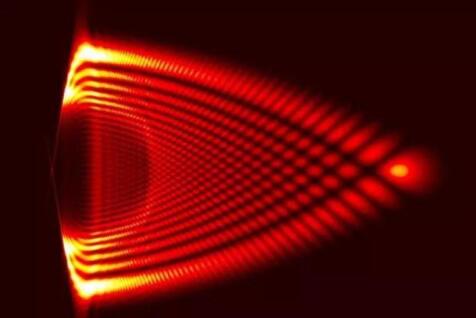联系我们
热门标签
生物 IB 数学 历史 sat 英语 中文 心理学 化学 成绩 物理 igcse辅导 IGCSE课程 ib课程 ib辅导 IB培训 IGCSE培训 ALEVEL课程 ALEVEL辅导 ALEVEL培训 ALevel经济 IGCSE英语 IB中文 IB历史 IB化学GCSE物理辅导Thermal Physics热学知识点
Thermal Physics热学物理是GCSE物理课程辅导第二章节中的内容,今天学通国际教育老师为大家介绍GCSE物理辅导知识点内容,来帮助同学们做好复习工作。

2.1 Simple kinetic molecular model of matter物质简单分子动能模型
(a)States of matter物质的状态
1-state the distinguishing properties of solids,liquids and gases
描述固体,液体,气体性质的区别
(b)Molecular model分子模型
1-describe qualitatively the molecular structure of solids,liquids and gases
定性的描述固体,液体,气体的分子结构
2-interpret the temperature of a gas in terms of the motion of its molecules
以分子运动来描述气体的温度
3-describe qualitatively the pressure of a gas in terms of the motion of its molecules
以分子运动来定性的描述气体的压强。
4-describe qualitatively the effect of a change of temperature on the pressure of a gas at constant volume
定性的描述体积不变时温度的变化对压强的影响。
5-show an understanding of the random motion of particles in a suspension as evidence for the kinetic molecular model of matter
解释和理解粒子的随机运动是分子动力学模型的一个实例
6-describe this motion(sometimes known as Brownian motion)in terms of random molecular bombardment
用分子的随机碰撞来描述一种运动(布朗运动)
7-relate the properties of solids,liquids and gases to the forces and distances between molecules and to the motion of the molecules
联系固体,液体,气体的性质与分子间力,分子间距离和分子的运动
8-show an appreciation that massive particles may be moved by light,fast moving molecules展示一定质量的粒子被光照后移动,并且移动加快。
(c)Evaporation蒸发
1-describe evaporation in terms of the escape of more-energetic molecules from the surface of a liquid
以高能量的分子从液体表面逃离的方式描述蒸发。
2-relate evaporation and the consequent cooling
联系蒸发和冷却结果
3-demonstrate an understanding of how temperature,surface area and wind over a surface influence evaporation
描述理解温度,表面积和表面的气流对蒸发的影响。
(d)Pressure changes改变压强
1-relate the change in volume of a gas to change in pressure applied to the gas at constant temperature
联系温度不变时,体积的改变引起压强的改变。
2-recall and use the equation pV=constant at constant temperature
记住和应用当温度不变时等式,PV=常数
2.2 Thermal properties热性质
(a)Thermal expansion of solids,liquids and gases
固体,液体和气体的热膨胀。
1-describe qualitatively the thermal expansion of solids,liquids and gases
定性的描述固体,液体和气体的热膨胀。
2-identify and explain some of the everyday applications and consequences of thermal expansion
描述和解释一些生活中热膨胀的实例
3-describe qualitatively the effect of a change of temperature on the volume of a gas at constant pressure mention
定性的描述提到的压强一定时,温度对气体的影响。
4-show an appreciation of the relative order of magnitude of the expansion of solids,liquids and gases说明并展现固体、液体、气体之间膨胀的关系
(b)Measurement of Temperature温度的测量
1-appreciate how a physical property which varies with temperature may be used for the measurement of temperature and state examples of such properties
赏识一下变化温度的物理性质被用来测量温度并描述一个类似的例子
2-recogize the need for and identify fixed Points
识别和辨认所需要的固定点
3-describe the structure and action of liquid in glass thermometers
描述一个液体温度计的结构和作用
4-demonstrate understanding of sensitivity,range and linearity
说明和理解灵敏度,变化范围和线性
5-describe the structure of a thermocouple and show understanding of its use for measuring high temperatures and those which vary rapidly
描述热偶的结构和理解用它来测量迅速变化的高温
(c)Thermal capacity热容量
1-relate a rise in temperature of a body to an increase in internal energy
描述一个物体的温度升高内能增加。
2-show an understanding of the term thermal capacity理解说明热容量
3-describe an experiment to measure the specific heat capacity of a substance
描述一个实验测量一个物体的比热容量。
(d)Melting and boiling熔化和沸腾
1-describe melting and boiling in terms of energy input without a change in temperature
温度不变时用吸收的能量描述融化和沸腾
2-state the meaning of melting point and boiling point描述熔点和沸点的意义
3-describe condensation and solidification描述液化和凝固
4-distinguish between boiling and evaporation区分沸腾和蒸发
5-use the terms latent heat of vaporization and latent heat of fusion and give a molecular interpretation of latent heat
用蒸发潜热和熔化潜热和给定的分子解释潜热。
6-describe an experiment to measure specific latent heats for steam and for ice
描述一个测量水流和冰的浅比热。
2.3 Transfer of thermal energy热能的传递
(a)Conduction传导
1-describe experiments to demonstrate the properties of good and bad conductors of heat
描述一个热导体性能好坏的实验。
2-give a simple molecular account of heat transfer in solids
给出在固体中一个简单分子热能的转移。
(b)Convection对流
1-relate convection in fluids to density changes and describe experiments to illustrate convection
液体密度的改变和转换的关系,描述一个实验解释转换。
(c)Radiation辐射
1-identify infra-red radiation as part of the electromagnetic spectrum
辨认红外辐射是电磁光谱的一部分。
2-describe experiments to show the properties of good and bad emitters and good and bad absorbers of infra-red radiation
描述一些实验证明红外辐射好的和坏的释放者和吸收者。
(d)Consequences of energy transfer能量转移的结果
1-identify and explain some of the everyday applications and consequences of conduction,convection and radiation
以上就是GCSE物理辅导Thermal Physics热学知识点的介绍,想要了解更多GCSE辅导的信息,可以咨询学通国际教育老师。




